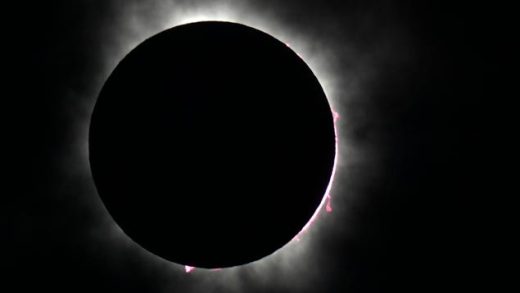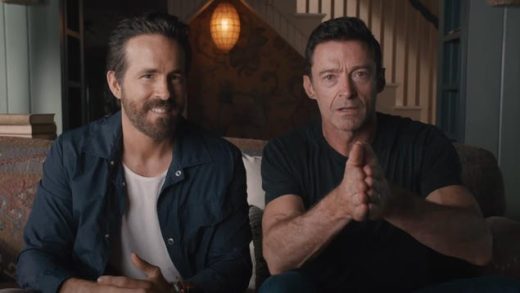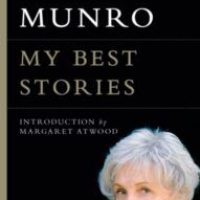From Ursula to Elsa to Luca, Disney has done the very least in LGBTQ representation for years. They’ve given us queer-coded villains, background characters that may be lesbians, minor characters who have easy-to-cut lines declaring their orientation, or some main characters who seem subtextually queer but won’t dare declare. Incredibly, in the same year just-deposed Disney CEO Bob Chapek earned backlash for the company’s response to Florida’s “Don’t Say Gay” bill, the studio also released Strange World, which features a main character who is undeniably gay. And this time, it finally feels like worthwhile representation.
Strange World‘s Ethan Clade is Disney’s first out gay teen hero.

Credit: Disney
Directed by Don Hall and Qui Nguyen, Strange World guides audiences into a multi-generational adventure centered on three men in the Clade family. Bushy-bearded Jaeger Clade (voiced by Dennis Quaid) is a burly macho man who loves exploring, fighting monsters, and impulsively pitching into action mode. His son, Searcher Clade (voiced by Jake Gyllenhaal), is a gentler brand of masculinity. He’s a farmer and an intellectual who counts being tirelessly tender to his teen son as a major point of pride. That son is Ethan Clade (voiced by Jaboukie Young-White), who follows in his dad’s footsteps in that he doesn’t want to follow in his dad’s footsteps. He wants to forge a path of his own.
Ethan isn’t into farming; like his grandfather Jaeger, he’s far more fascinated by the wonders that exploring could offer. But he’s not exactly like his grandfather either, as their concept of expedition differs when it comes to conquest. Through these three generations, Strange World reflects the current drama playing out around the world, where boomers, millennials, and Gen Z bump heads on everything from conversation etiquette to climate change. So, when it’s revealed that Ethan is gay, I braced for the inevitable generation clash over queerness. Sure, Searcher has no issues with his son being gay, and he even shows an earnest enthusiasm when Ethan’s crush Diazo comes by the farm. But surely the gruff, toxically masculine grandpa Jaeger will bristle, right? Wrong.
‘Owl House’ is a perfect pick for a Halloween binge
Midway through the movie, Ethan and his grandfather share a quiet moment amid a mission to save their world. The old man asks if the boy has a sweetheart. Ethan and Diazo aren’t official, but the crush burns so hard that it shows in Ethan’s blushing cheeks. I readied myself for the question that heteronormative media has trained me to expect: “What’s her name?” But instead, Nguyen’s screenplay dodges this trope and, with it, homophobia altogether. Instead, Jaeger says excitedly, “Who is it?”
“Who is it?”
And just like that, the gendered expectation that his grandson’s sweetheart is a girl is gone. The word “sweetheart” itself is gender-neutral, meaning the possibility was cleverly baked into Nguyen’s script. When Ethan answers, his grandfather, whom he’s never met before, isn’t shocked to discover the boy is gay. It’s not an issue. It’s not a thought. And that is incredibly exciting because this queer teen character isn’t queer as a plot point. The movie is not exploiting his identity as a tool for trauma. Instead, Strange World acknowledges that gay kids can just exist in media and not have their identity treated like grounds for a teachable moment.
Disney’s history of queer representation goes from bad to better.

Credit: Disney
Queer representation in movies and TV has had a bumpy road. Early on, queer-coded characters were often swaggering villains whose fabulousness made them fascinating but also othered them. In Disney movies, this trend was most apparent in the ’90s with The Little Mermaid‘s Ursula, The Lion King’s Scar, and Aladdin’s Jafar. In the 2010s, queer characters became a part of the set dressing, with seemingly same-sex couples popping up in the background of Zootopia, Finding Dory, and Toy Story 4. When it came to main characters, audiences have had to look deeper for characteristics typically coded as queer in order to see themselves onscreen, and so viewers have declared Elsa from Frozen, the boys of Luca, and the warring young women of Raya and the Last Dragon to be LGBTQ.
Alternately, there was the embarrassment that was Josh Gad as the live-action LeFou in 2017’s Beauty and the Beast, which director Bill Condon proclaimed would have a “nice, exclusively gay moment.” That meant a blink-and-you’d-miss-it bit where LeFou — Gaston’s clownish sidekick whose name literally means “the fool” in French — briefly dancing with another man. A queer-confirmed villain’s sidekick wasn’t exactly as groundbreaking as Condon would have hoped.
Netflix saves Disney’s canceled ‘Nimona’ film. Here’s why that’s good news for queer representation.
This “exclusively gay moment” earned eye rolls from the LGBTQ community, as did the proclamation that the Russo Bros. would be introducing the MCU’s first openly gay character in Avengers: End Game. Turns out, that meant an unnamed character in a grief support group who was played by director Joe Russo. It was bullshit representation, especially as reports leaked that Disney had cut queer content from Thor: Ragnarok that would have made it MCU canon that Valkyrie is bi, as well as some femme-on-femme flirtation between two Dora Milaje soldiers in Black Panther. It wasn’t until 2021’s Eternals that the MCU offered a canonically queer superhero with Phastos, played by Brian Tyree Henry.
But even as Disney made strides, the studio drew ire for their initial lack of action against the “Don’t Say Gay” bill and for cutting queer content from their projects. Because of this righteous uproar, Disney restored a sapphic kiss to Lightyear ahead of its release. Another step forward came in Black Panther: Wakanda Forever, in which two members of the female warrior squad Dora Milaje are finally identified as lovers. And now comes Ethan.
Strange World charts a modern course in queer stories.

Credit: Disney
Outside of the Disney landscape, stories of queer youth in the media often center on moments of trauma, be that the stress of coming out, being estranged from their families, living with the increased risk of hate crimes or partner violence, or otherwise confronting homophobia. Even in movies about gay romance, the threat of homophobia is often lurking nearby, ready to squelch any hint of carefree queer joy. The LGBTQ community has begun to call out for representation that doesn’t equate queerness with trauma. Some days we just get to live and have fun. And on the ones where we don’t, wouldn’t it be nice to have a fantasy movie wherein we can see ourselves living such a blessed life? Strange World answers that call.
Ethan is biracial and gay, but the drama of his journey is not tied to these identifiers. He gets to crush on a cute boy, experience the belly butterflies of that flush of infatuation — and the crushing embarrassment when his dad tries to play it cool in front of his friends. Ethan gets to tell his grandfather about his crush, and he receives support and advice. He is loved and accepted — and he’s got to help his family save the world before it’s too late. After all, he’s got a boy back home waiting for him.
We love to see it.
Strange World is now in theaters.













